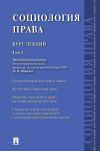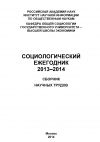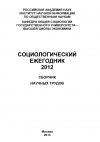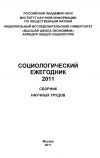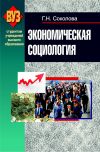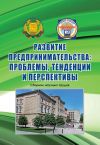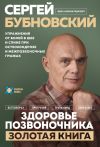Текст книги "Социологический ежегодник 2010"

Автор книги: Коллектив авторов
Жанр: Социология, Наука и Образование
сообщить о неприемлемом содержимом
Текущая страница: 33 (всего у книги 39 страниц)
Д.В. Ефременко
Хронологическая близость двух памятных дат – 120-летия со дня рождения Питирима Александровича Сорокина (2009) и столетней годовщины со дня рождения Роберта Кинга Мертона (2010) – стала отправной точкой для подготовки настоящего раздела. Но помимо формального повода, сразу же стало понятно, что переплетение судеб этих великих социологов XX в. должно быть подлинным стержнем «юбилейного» раздела. Сорокин и Мертон – две знаковые фигуры в истории социологии – символизируют также плодотворность диалога и взаимообогащения русской и американской традиций социологической мысли. И если история начавшегося в 1930-е годы сотрудничества Питирима Сорокина и Роберта Мер-тона служит ярким примером такого диалога, то материалы настоящего раздела явно показывают, что эта эстафета подхватывается и следующими поколениями российских и американских социологов.
Среди включенных в этот раздел текстов особо хотелось бы выделить самую полную подборку материалов длившейся на протяжении десятилетий переписки между Питиримом Сорокиным и Робертом Мертоном. В подборке объединены письма, хранящиеся в собрании Саскачеванского университета (Канада) и опубликованные в 2009 г. в русском переводе (1), а также письма, которые Роберт Мертон незадолго до смерти передал Н.Е. Покровскому (эти письма публикуются впервые; перевод выполнен В.Г. Николаевым). Данная публикация стала результатом сотрудничества редакционной коллегии «Социологического ежегодника» и Регионального учебно-научного центра имени Питирима Сорокина в Сыктывкаре. По нашему мнению, воссоединение прежде разрозненных материалов переписки Питирима Сорокина и Роберта Мертона позволяет не только с максимальной полнотой реконструировать историю личных взаимоотношений этих выдающихся мыслителей, но и расширяет представления о тех этапах развития мировой социологии, ключевыми фигурами которых были Сорокин и Мертон.
К сожалению, реалии существования российской социологии не дают оснований для юбилейной благостности. В конце октября 2010 г., незадолго до сдачи этого выпуска Ежегодника в печать, пришла неожиданная новость: решением ректора Сыктывкарского госуниверситета Василия За-дорожного был закрыт Региональный учебно-научный центр имени Питирима Сорокина. Центр был создан при Сыктывкарском университете всего лишь полтора года назад в рамках празднования 120-летнего юбилея Питирима Сорокина, который, как известно, родился в старинном селе Турья, находящемся сегодня в административно-территориальных границах Республики Коми. Создание Центра стало не только ключевым событием юбилейных мероприятий – оно должно было служить демонстрацией серьезности намерений региональной управленческой и интеллектуальной элиты сформировать в республике устойчивую традицию изучения научного наследия Питирима Сорокина и – шире – социально-гуманитарных исследований, раскрывающих потенциал идей этого великого социолога. В считанные месяцы немногочисленный коллектив сотрудников Центра во главе с П.П. Кротовым сформировал обширную и постоянно пополняемую базу данных о научном наследии и биографии Питирима Сорокина; интернет-сайт центра (http://www.pitirimsorokin.org) благодаря высокой информативности и оперативному обновлению материалов вошел в число сетевых ресурсов, востребованных российскими социологами. Деятельность Центра привлекла внимание как российского научного сообщества, так и зарубежных исследователей. Главным достижением специалистов Центра стала научная публикация сорокинского эпистолярного наследия – почти четырех сотен писем Питирима Сорокина и его корреспондентов (1). Близилась к завершению и подготовка к изданию книги «От войны к миру: Семья Сорокиных в борьбе против фашизма», основанной на архивных материалах, переданных Центру сыном Питирима Сорокина Сергеем.
Каковы же мотивы закрытия Сорокинского центра в Сыктывкарском госуниверситете? Насколько можно судить по опубликованным заявлениям и комментариям, их два – официальные планы по созданию в республике «Центра наследия Питирима Сорокина» и коммерческая неэффективность. Аргумент ректора В.Н. Задорожного о том, что параллельное существование двух центров по изучению наследия Сорокина неоправданно (2), как будто звучит вполне весомо. Однако дистанция от принятия официального постановления до его практической реализации далеко не пройдена. Согласно постановлению, новый центр должен начать свою работу лишь в марте 2011 г. К тому же нет достаточных гарантий, что этот срок будет соблюден, а вновь созданная организация станет действительно полноценным исследовательским учреждением. Между тем, изгнание ранее функционировавшего Сорокинского центра из стен университета означает дезорганизацию его работы. И если издательские проекты могут успешно осуществляться за пределами СГУ, то по научной работе ряда студентов университета, которые принимали активное участие в деятельности Центра, нанесен тяжелейший удар.
Что касается «коммерческой неэффективности», на которую сетует ректор Задорожный, то и в России, и за рубежом подавляющее большинство структур, подобных Сорокинскому центру, являются бесприбыльными, существуют за счет бюджетного финансирования, целевой грантовой поддержки научных фондов или пожертвований благотворителей. Надо полагать, что теперь, после изгнания Сорокинского центра, ректорат сумеет распорядиться «освободившимся» помещением таким образом, чтобы «возместить» затраченные на его ремонт 150 тыс. руб. (2). Однако продемонстрированное В.Н. Задорожным понимание экономической эффективности – это, действительно, «нашего времени случай-с». Далеко не секрет, что в российской науке и российском образовании сегодня укрепляются позиции именно тех управленцев, для которых понятия «репутация» и «долгосрочные инвестиции в интеллектуальный и человеческий капитал» являются пустым звуком.
…В отличие от рождения и смерти одного человека, их юбилеям присуща повторяемость. Памятные даты выстраиваются в длинную череду, обрывающуюся лишь тогда, когда больше не находится желающих их отмечать. Питирима Сорокина и Роберта Мертона будут помнить до тех пор, пока существует социология. Только празднование ближайших памятных дат – 125-летия или 130-летия со дня рождения Сорокина – в Республике Коми будет, по всей видимости, сопровождаться недоуменными вопросами относительно тех обещаний и деклараций, которые щедро раздавались во время предыдущего юбилея. Вероятно, найдутся те, кто захочет подвести баланс торжественных заявлений и практических дел. И тогда на одной чаше весов окажутся реальные достижения сотрудников Сорокинского центра, а на другой – решение ректора Задорожного. Что же, в конце концов, перевесит?
Литература
1. Питирим Сорокин: Избранная переписка / Под. ред. П.П. Кротова. – Вологда: Древности Севера, 2009. – 336 с.
2. Центром наследия Питирима Сорокина должна заняться Коми – ректор СыктГУ Василий Задорожный. – Режим доступа: http://komiinform.ru/news/72057/
VI. Социологическая кафедра
Университет уходит в виртуальную реальность
Н.Е. Покровский
Перефразируя известное высказывание, можно с большой долей уверенности заявить, что тот, кто владеет современными инфокоммуникациями, владеет миром.
В понятии «инфокоммуникации» естественным образом объединяются два понятия – «информация» и «коммуникации». Таким образом, уже недостаточно просто обладать информацией или генерировать ее. Необходимо осуществлять ее перенос и распространение в заданной среде и по обусловленным целевым ориентирам.
Эти достаточно абстрактные истины между тем имеют прямое отношение к практике университетского образования и реализации научных проектов. Если в свое время был актуален призыв: «Ни одно социологическое исследование не существует, пока оно не отражено в СМИ» (М.К. Горшков, директор Института социологии РАН), то сегодня уже приходится говорить о комплексных программах распространения научного знания и передовой экспертизы в сложном информационно-коммуникационном пространстве с использованием разнообразных форм («форматов»). При этом производители образовательных и научных продуктов теперь одновременно становятся и их распространителями, владеющими всеми средствами коммуникаций. В этих условиях учебный процесс в университетах превращается в инфокоммуникационный процесс, требующий сложных настроек, ранее не присутствовавших в арсенале университетов.
На недавнем Всемирном социологическом конгрессе в Гётеборге вопрос об инфокоммуникационном присутствии социологии в мире был поднят на новую высоту. По мысли нового президента Международной социологической ассоциации профессора Майкла Буравого (США), электронные медиа становятся кардинальными для ведущей организации всех социологов мира. Это включает различного рода электронные бюллетени, достигающие посредством Интернета отдаленных социологических центров и факультетов, интернет-сайт «Университеты в кризисе», превращающийся в поле обсуждения перспектив высшего образования, «портреты социологов» – трибуна ведущих мировых экспертов-социологов, обращающихся посредством электронных коммуникаций к широким слоям мирового сообщества. Программа МСА по внедрению в систему современных коммуникаций лишний раз подчеркивает значимость этого направления.
Особое измерение инфокоммуникационной трансформации гуманитарной сферы и образования связано с виртуализацией. Это процесс утраты важнейшими институтами общества их материальной «осязаемости», предметности, эмпиричности, даваемой нам в ощущениях, и переходом в электронно-цифровую-медийную-коммуникационную форму.
Для традиционалистского сознания понятие «университет» ассоциируется, прежде всего, с представлениями о комплексе зданий (кампусе), аудиториях, наполняемых студентами, руководимыми профессорами. Все рисуется воображением в конкретной материальной оболочке и непременно в режиме очного присутствия. От этих стереотипов восприятия университета теперь приходится все чаще и чаще отказываться. Университет продолжает оставаться сложно настраивающейся системой, все бо́льшую роль в которой начинают играть виртуальные отношения и процессы, т.е. опосредованные цифровыми технологиями перенесения информации и контроля.
Университет постепенно и частично уходит «в виртуал» в том смысле, что учебный процесс преодолевает физические дистанции, во многих случаях не требуя очного присутствия в одном пространстве и в одно время всех вовлеченных субъектов действия. Коммуникативные отношения в университетской среде переходят в свое иное качество – в инфокоммуникационный онлайн.
Этот процесс носит объективный характер. Он не есть дань инновационной моде. Напротив, указанная тенденция существенно повышает эффективность всей учебной деятельности и открывает перед ней принципиально новые горизонты.
* * *
Группа молодых социологов, работающая на кафедре общей социологии Государственного университета – Высшей школы экономики под руководством профессора Н.Е. Покровского, поставила своей целью исследовать процесс виртуализации университетских и научных коммуникаций в современном мире, смоделировать это явление, протестировать его в режиме эксперимента. Какие-то аспекты виртуализации представляются самоочевидными, например широкая компьютеризация и оцифровка учебных материалов, использование визуальных медийных средств подачи текстов и сопровождения лекций. Все большее распространение получают такие явления, как продолжение диалога студента и преподавателя по учебным вопросам, перенос этого диалога в среду Интернета. Однако еще более радикальные новшества связаны с развитием дистантного образования в формате онлайн-телеконференций и спутникового телевещания. Онлайн фактически становится параллельной формой образовательного процесса, а в каких-то случаях и основной.
Так, на кафедре общей социологии Государственного университета – Высшей школы экономики уже существует целая система онлайн дистантных курсов, основывающаяся на телемостах в реальном времени. Виртуальные телемосты связывают социологов из ГУ–ВШЭ с коллегами в ведущих российских и зарубежных университетах. Само онлайн-преподавание превратилось в своего рода повседневность учебного процесса. Важным компонентом этого процесса стали мастер-классы выдающихся современных социологов, через океаны и границы непосредственно обращающихся к будущим магистрам социологии.
* * *
Ниже помещаются транскрипты (записи-протоколы) телемостов с современными классиками социологии. Все тексты авторизованы.
Организационную и редакторскую работу выполнил А.Е. Боклин, (аспирант кафедры общей социологии ГУ–ВШЭ и Университета Дж. Мейсона, США).
Подготовительная работа – А.Н. Андреев
Мир в движении / Телемост с Джоном Урри
World on the move / Telebridge with John Urry; Higher school of economics (Moscow, Russia) – Lancaster university (Lancaster, UK), 10 September 2009
Джон Урри (род. 1946)
Выдающийся современный британский социолог, профессор Ланкастерского университета, руководитель Центра исследований мобильности. Им написаны работы в области социологии окружающей среды, социологии туризма, социологии мобильности и в области социальной теории в целом.
В ранних работах Урри внимание было сосредоточено на социальной теории и философии социальных наук. В соавторстве с Расселом Китом он подготовил труд «Социальная теория как наука» (1975, 1982), в котором изложены основные черты реалистической философии науки. В «Анатомии капиталистических обществ» (1981) представлены критические очерки к ряду марксистских традиций, структурализму Л. Альтюссера, немецкой теории государства и к последователям А. Грамши. В последнее время Джон Урри фокусирует свое внимание на изучении изменений в характере мобильности в современном обществе. Среди последних работ Дж. Урри: «Социология за пределами общества» (2000), «Мобильные технологии города» (соредактор с М. Шелером, 2006).
Participants
JU – John Urry, Lancaster University
NP – Nikita Pokrovsky, HSE
SB – Svetlana Bankovskaya, HSE
AB – Alex Boklin, HSE
Q – Questions from HSE MA students
JU: It sometimes seems as if all the world is on the move. The early retired, international students, terrorists, members of diasporas, holidaymakers, business people, slaves, sports stars, asylum seekers, refugees, backpackers, commuters, young mobile professionals, prostitutes – these and many others – seem to find the contemporary world is their oyster or at least their destiny. Criss-crossing the globe are the routeways of these many groups intermittently encountering one another in transportation and communication hubs, searching out in real and electronic databases the next coach, message, plane, back of lorry, text, bus, lift, ferry, train, car, web site, wifi hot spot and so on. So we have sort of pattern of movement and various hubs where different groups in different sorts of ways – virtually or really – encounter each other.
The scale of this travelling is immense. It is predicted that by 2010 there will be at least one billion legal international arrivals each year (compared with 25 million in 1950); there are four million air passengers each day; at any one time 360,000 passengers are at any time in flight above the United States, equivalent to a substantial city; 31 million refugees roam the globe; and there were 552 m cars in 1998 with a projected 730 m in 2020, equivalent to one for every 8,6 people. In 1800 people in the United Slates travelled on average 50 metres a day – they now travel 50 kilometres a day. Today world citizens move 23 billion kilometres; by 2050 it is predicted that that figure will have increased fourfold to 106 billion.
Today world citizens move 23 billion kilometres; by 2050 it is predicted that that figure will have increased fourfold to 106 billion. But interestingly, people actually don’t spend more time travelling, since this seems to have remained more or less constant at about one hour or so a day. Also, people do not necessarily make more journeys, they don’t travel more time – but they travel faster and further, so what is crucial is the speed of travel. And of course what has happened has been the shift from walking, cycling or being on the back of a horse to sitting in the car, being on the train or in an airplane, the shift from slow modes to fast modes of travel.
The amount of travel industry accounts for about 10% of the world economy, about 10% of the world employment and about 10% of world income, and almost everywhere is to some degree affected by it. The World Tourism Organization, for example, publishes statistics for over 200 countries: most countries send and most countries receive some visitors. Perhaps North Korea has very few of them, but almost every other country of the world is a recipient of some visitors.
We have a pattern of voluntary or mostly voluntary travelling. It is the largest ever peaceful movement of people across borders. To some degree for people who are relatively affluent, maybe the rich – quarter or the third of the world population – the world has become a «department store of countrysides and cities» that can be at lest from time to time sampled. And it is also interesting: even with various global catastrophes like September 11 or the bombings in Madrid, Bali, Moscow and London, various global pandemics an so on this pattern of general increase in physical movement and in communications has not significantly gone down. If you look at the statistics after September 2001 of after these various bombings you got a little deep and then it reasserts itself. The only exception to that has been after the financial collapse in various countries – it has been a significant worldwide deep after October 2008. Interesting question as well is whether that upward line will reassert itself or whether this is a significant shift eating mobility patterns around the world.
I should also point out that not only people are physically mobile but also materials are on the move, often carried by moving bodies and of course many products are made up of many different components that have been moved in and assembled in different sorts of ways. Physical movement takes place at the same with an astonishing growth of the Internet from 1993 and 1994 when the first Internet practices were brought in, and since the growth of mobile telephony as well. Internet, mobile telephony have reorganized communications between people and yet you have also had a large and significant increase in physical movements simultaneously.
It is now thought like 2 to 3 billion mobile phones in the world, with the population of 6,5 billion people and a billion to 2 billion internet users. So you have a worldwide mobilizing of mobile phones, Internet and also physical movements. Mobile technologies appear to be transforming many aspects of economic and social life that are in some sense on the «move» or away from «home». What we have are extensive, intricate connections between physical travel and modes of communication. Some people say that physical changes appear to be «de-materializing» connections, as people, machines, images, information, money and finance, ideas and dangers are «on the move», making and remaking connections at rapid speeds around the world. I think that issues of too much movement for some and too little for others, the wrong sort of movement or the wrong time are central to people’s lives and central to the operations of many organizations, public institutions, private companies, NGOs and so on, they are centre-stage on many policy and academic agendas.
Q: What do you think about the recent development of mobile technology? Does it change the experience of movement? Does it actually destroy the experience of movement? Because irrelevant of where you are, you are constantly linked to your personal networks, you can even receive a call from your mother asking what you had for breakfast.
JU: Yes, sure. One of the things I would suggest is the way in which people are not quite away, intimately connected, and some people describe this as «imagined presence». As you move you are in your little mobile machine carrying around your connections and your relationships.
And of course address books. In a way, everybody’s address book is different from others. So rather then in former times most people would have known roughly the same other people, what mobile life is a situation in which people know a lot of different people and each person’s network is distinct, we have personalized networks. It is also interesting because although we don’t know each other, but probably there are connections between our networks: there are people in my address book who know some other people, who would then know Nikita, so there are interesting interconnections around the world through these networks.
* * *
JU: There are four main senses of the term «mobile» or «mobility». I use it a lot and write about the idea of mobile sociology. I think «mobile» has at least 4 meanings.
First, there is the use of mobile to mean something that moves or is capable of movement, as with the iconic mobile (portable) phone but also with the mobile person, home, hospital, kitchen, and so on. Mobile is a property of things and of people (as with the class designated the «new mobility»). Many technologies in the contemporary era appear to have set in motion new ways of people being temporarily mobile, including various physical prostheses that enable the «disabled immobile» to acquire some means of movement. Mostly the term mobile here is a positive category, except in the various critiques of what has been termed «hypermobility».
Second, there is the sense of mobile as a mob, a rabble or an unruly crowd. The mob is seen as disorderly precisely because it is mobile, not fully fixed within boundaries and therefore needs to be tracked and socially regulated. The contemporary world appears to be generating many new dangerous mobs or multitudes, including so-called smart mobs, which are less easily regulated and require for their governance, new and extensive physical and / or electronic systems of counting, regulation and fixing within known places or specified borders.
Third, there is the sense of mobility deployed in mainstream sociology / social science. This is upward or downward social mobility. Mobility is here vertical. It is presumed that there is relatively clear cut vertical hierarchy of positions and that individuals can be located by comparison with their parent’s position or with their own starting position within such hierarchies. There is debate as to whether or not contemporary societies have increased the circulation of people up and down such hierarchies, making the modern world more or less mobile. Some argue that extra circulation only results from changes in the number of top positions and not in increased movement between them. There are complex relations between elements of physical movement and social mobility.
And finally, there is mobility in the longer term sense of migration or other kinds of semi-permanent geographical movement. This is a horizontal sense of being «on the move», and refers especially to moving country or continent often in search of a «better life» or to escape from drought, persecution, war, starvation and so on. Although it is thought that contemporary societies entail much mobility in this sense, previous cultures often presupposed considerable movement such as from Europe to the dominated countries of their various Empires or later to North America.
I am going to use «mobility» to cover all of these senses but we have to be careful to be precise about which we are using.
One of the things that happened in the last 20–30 years has been the growth of an enormous number of different kinds of social patterns that presume physical movement and communications at a distance.
First of all, there has been the growth of forced migration, asylum seeking, refugees, the homeless, travelling and migrating. And of course some of these are now said to be the product of the effects of the climate change (droughts, floods etc), of huge problems in securing sufficient food in various countries and continents. And indeed some are related to the growth of slavery: some people now say there are more slaves in the contemporary world than there were at the heights of the European slave trade in the late 18th century – the period of the European history that Europeans are often keen to forget. But there is a large amount of forced or more or less forced movement and often obviously in circumstances which are unbelievably exploitative and oppressive.
Second kind of travel is the huge amount of business and professional travel and the proliferation of all sorts of places – hotels, conference centers – which have sprung up to provide temporary homes for business and academic folks, architects and artists and so on to meet up, often explicitly in neutral territories. The scale of that is very extensive.
Thirdly, there has been the growth of international students and the travel by young people often developing what in New Zealand is called «overseas experience». I guess a lot of people at least in Europe would also have patterns of overseas experience, they believe that in order to discover yourself you have to have travelled – away from the place that you were brought up in. That is quite significant
Fourth category has been the growth of a large amount of medical travel. In fact medical travel was very important in the early development of leisurely travel because of the importance of spa-towns – places to take water. These days, in the contemporary world there are many different kinds of what people call «medical tourism». I think one of the interesting countries for medical tourism is Cuba. It has a good health service and now tries to attract large numbers of west-European visitors and Canadians.
Fifthly, there is a significance of what we might call military mobility of armies, tanks, helicopters, aircrafts, satellites and so on, some of which have important spin-offs into civilian usages: for example, airports often change from being military to then being civilian.
Then is a quite significant pattern of what I call «post-employment travel», that is people retiring to the same country or to sunnier places – a lot of people from Scandinavia often retire to Spain and other parts of the Mediterranean, so persons of retirement are forming transnational post-employment lifestyles.
Then also what I call «trailing travel», the trailing travel of children, partners, other relatives and domestic servants who have to follow around the primary breadwinner, that is a trailing pattern of dependence.
Then there is travelling migration within diasporas; the most interesting diaspora, I think, is the Chinese diaspora which some people think has at least 45 million people, pretty big society. The Chinese diaspora spread around the world and obviously all sorts of patterns of movement are increasing between that it and China itself.
There are many travelling service workers in somewhere like Dubai for example, so Dubai is both a place of huge numbers of temporary visitors and then huge numbers of temporary visitors who are workers including sex workers «servicing» the visitors.
There is tourist travel and within it a particularly important and the fastest growing category is visiting friends and relatives. That is partly because of the all of the things I said earlier about young people’s travel or business and professional travel that sets up connections, networks and as a consequence of these networks from time to time friends and relatives get travelled too.
Then finally, there are all sorts of work-related travel and especially commuting travelling to other places daily or weekly.
A consequence of all these different patterns of social life is what I call «the mobility turn». Thinking about how mobilities should be built into social science, trying to mobilize analyses that have tended to be static, fixed and relatively non-spatial, non-mobile. This mobility turn is thus concerned with multiple ways in which economic and social life is performed and organized through time and across various kinds of space and especially the ways in which social relations get «stretched» across the globe. I try to think about the methods that follow and the phrase I have for this is «the developing mobile methods» so if people, ideas, information, money and objects are moving about how is it that social scientists try to capture and understand and analyze those movements? By definition, they are hard to capture, they are on the move, often they are not very visible and not very clear and some of the methods that social science has used are not very effective at capturing the slippery and changeable character of these patterns of movement.
In general, mobilities have been a black box, something people do not know about and do not investigate. Normally movement is seen as a neutral set of processes that permit the forms of economic, social and political life that need to be explained by other processes such as by economics or by politics. And to the extent which travel and communication have been studied, they have normally been placed in very separated categories so you have the study of transport, geography, the sociology of tourism or the study of communications. Of course holiday making, driving, walking phoning, flying and so on are manifestly significant within people’s lives and yet they tend to be under-examined.
One of the things that I think is necessary to develop in relation to thinking about mobility is to take account of what I call «the mobility system». These systems make possible movement, they mean that there are spaces for what I have been called «spaces of anticipation»that the journey can be made, that the message will get through, that the parcel will arrive, that the family group can meet up. These systems permit relatively predictable and relatively risk-free replication of the movement in question. And in the contemporary world there are an extraordinary number of these systems such as systems of tickets, addresses, safety, hubs, web-sites, money transfer, tours, storage of luggage, air traffic control, bar codes, timetables and there are many others of course. These systems are very interesting and are parts of the way in which the physical world has been overcome and made relatively secure regulated and relatively risk-free.
Правообладателям!
Это произведение, предположительно, находится в статусе 'public domain'. Если это не так и размещение материала нарушает чьи-либо права, то сообщите нам об этом.